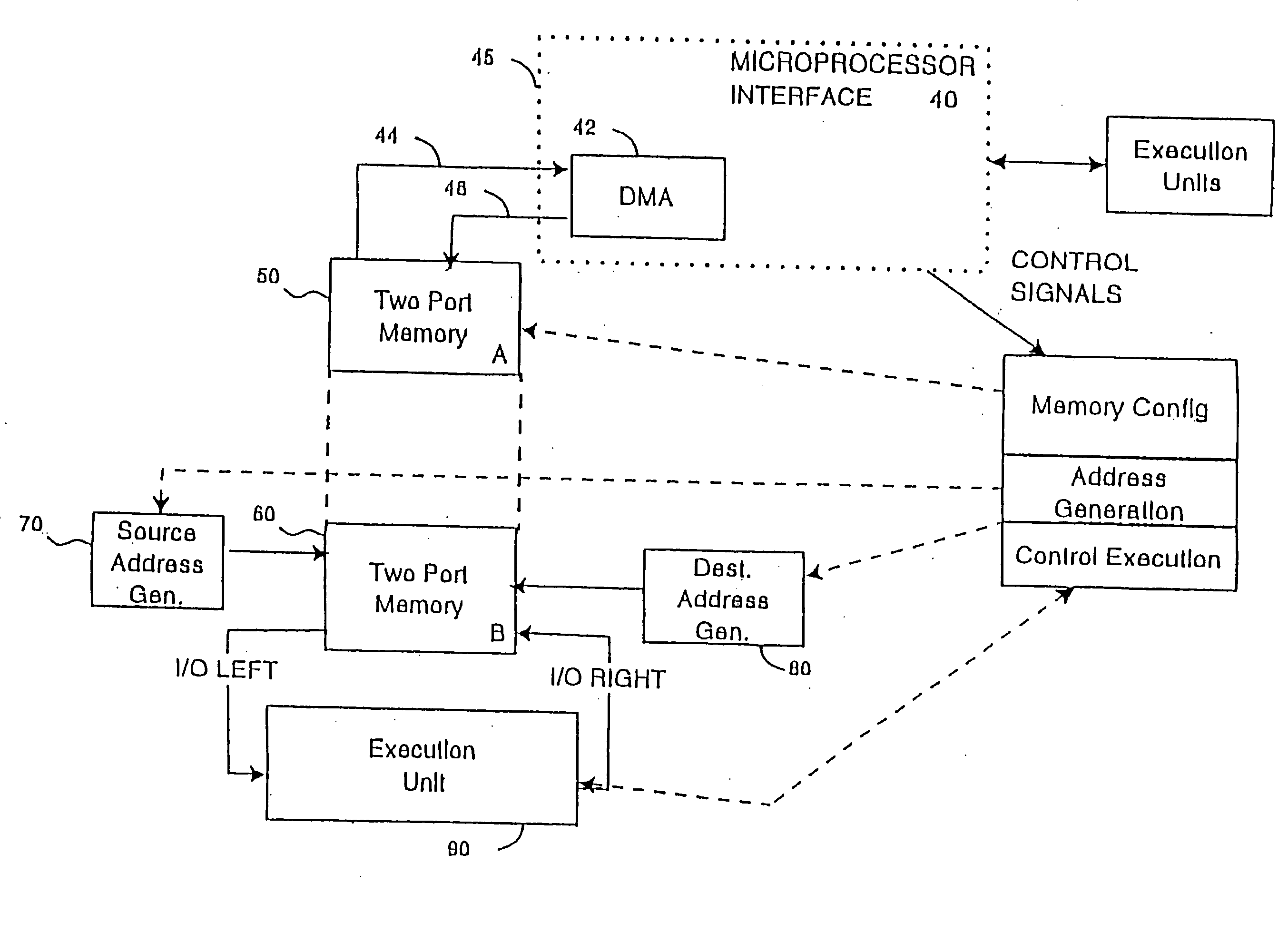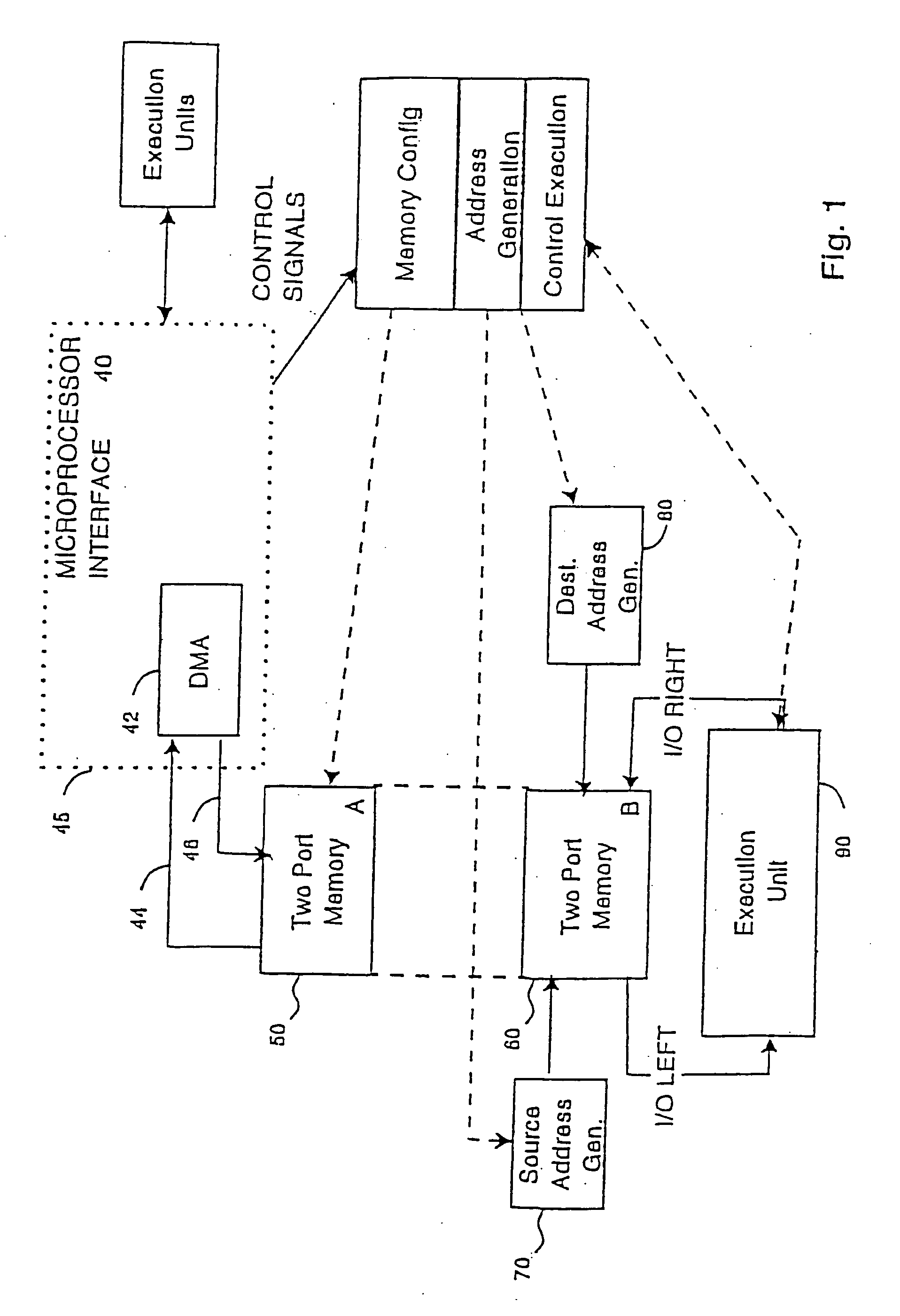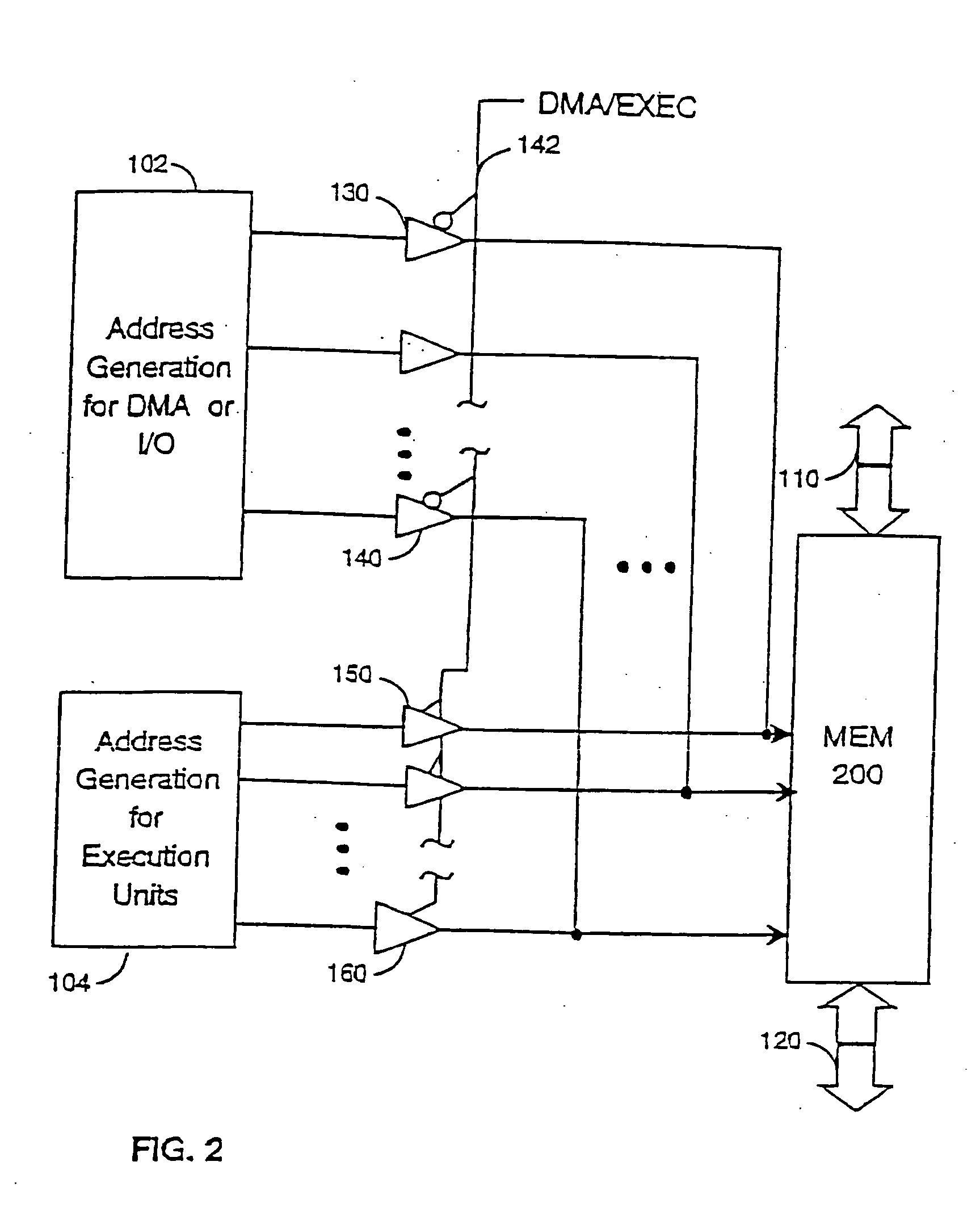Tightly coupled and scalable memory and execution unit architecture
a memory and execution unit technology, applied in the field of tightly coupled and scalable memory and execution unit architecture, can solve the problem that data transfer at the memory interface remains a relative bottleneck, and achieve the effect of improving the efficiency of operation
- Summary
- Abstract
- Description
- Claims
- Application Information
AI Technical Summary
Benefits of technology
Problems solved by technology
Method used
Image
Examples
Embodiment Construction
FIG. 1
[0073]FIG. 1 is a system-level block diagram of an architecture for memory and computing-intensive applications such as digital signal processing. In FIG. 1, a microprocessor interface 40 includes a DMA port 42 for moving data into a memory via path 46 and reading data from the memory via path 44. Alternatively, a single, bi-directional port could be used. The microprocessor interface 40 generically represents an interface to any type of controller or microprocessor. The interface partition indicated by the dashed line 45 in FIG. 1 may be a physical partition, where the microprocessor is in a separate integrated circuit, or it can merely indicate a functional partition in an implementation in which all of the memory and circuitry represented in the diagram of FIG. 1 is implemented on board a single integrated circuit. Other types of partitioning, use of hybrid circuits, etc., can be used. The microprocessor interface (DMA 42) also includes control signals indicated at 52. The ...
PUM
 Login to View More
Login to View More Abstract
Description
Claims
Application Information
 Login to View More
Login to View More - R&D
- Intellectual Property
- Life Sciences
- Materials
- Tech Scout
- Unparalleled Data Quality
- Higher Quality Content
- 60% Fewer Hallucinations
Browse by: Latest US Patents, China's latest patents, Technical Efficacy Thesaurus, Application Domain, Technology Topic, Popular Technical Reports.
© 2025 PatSnap. All rights reserved.Legal|Privacy policy|Modern Slavery Act Transparency Statement|Sitemap|About US| Contact US: help@patsnap.com



